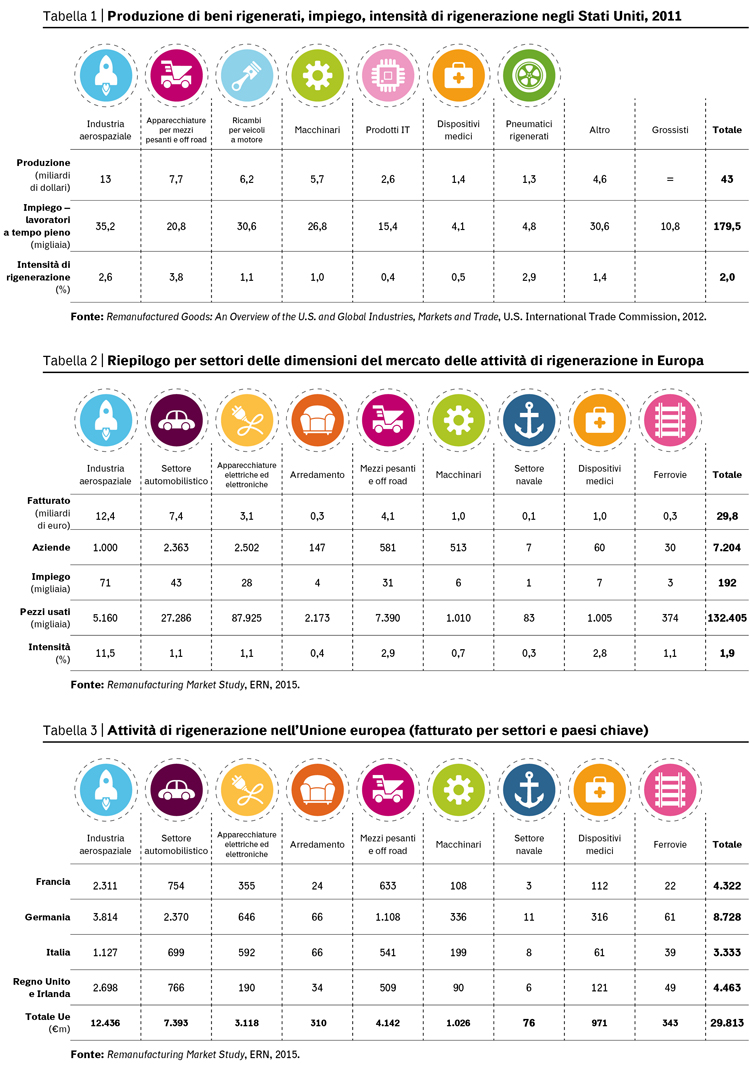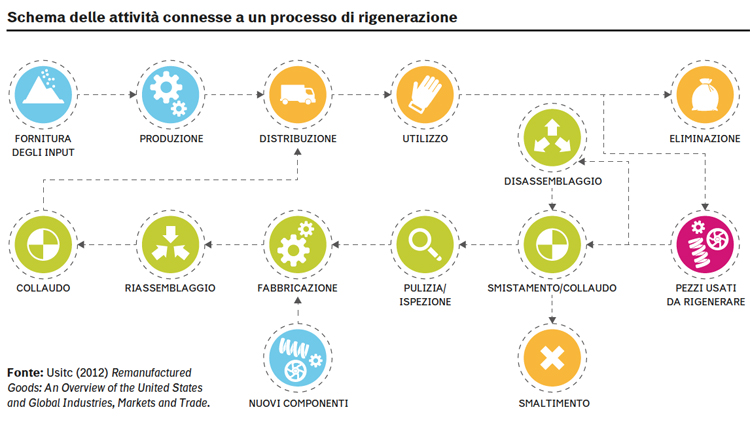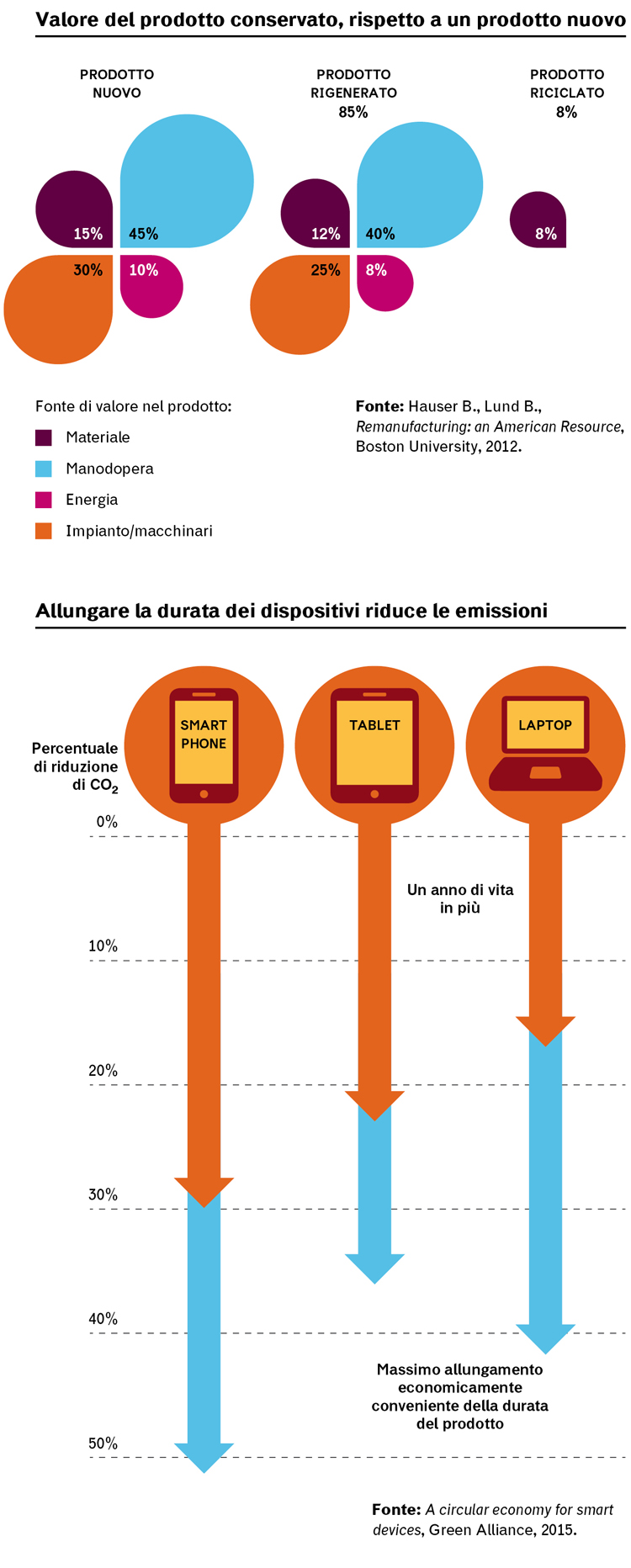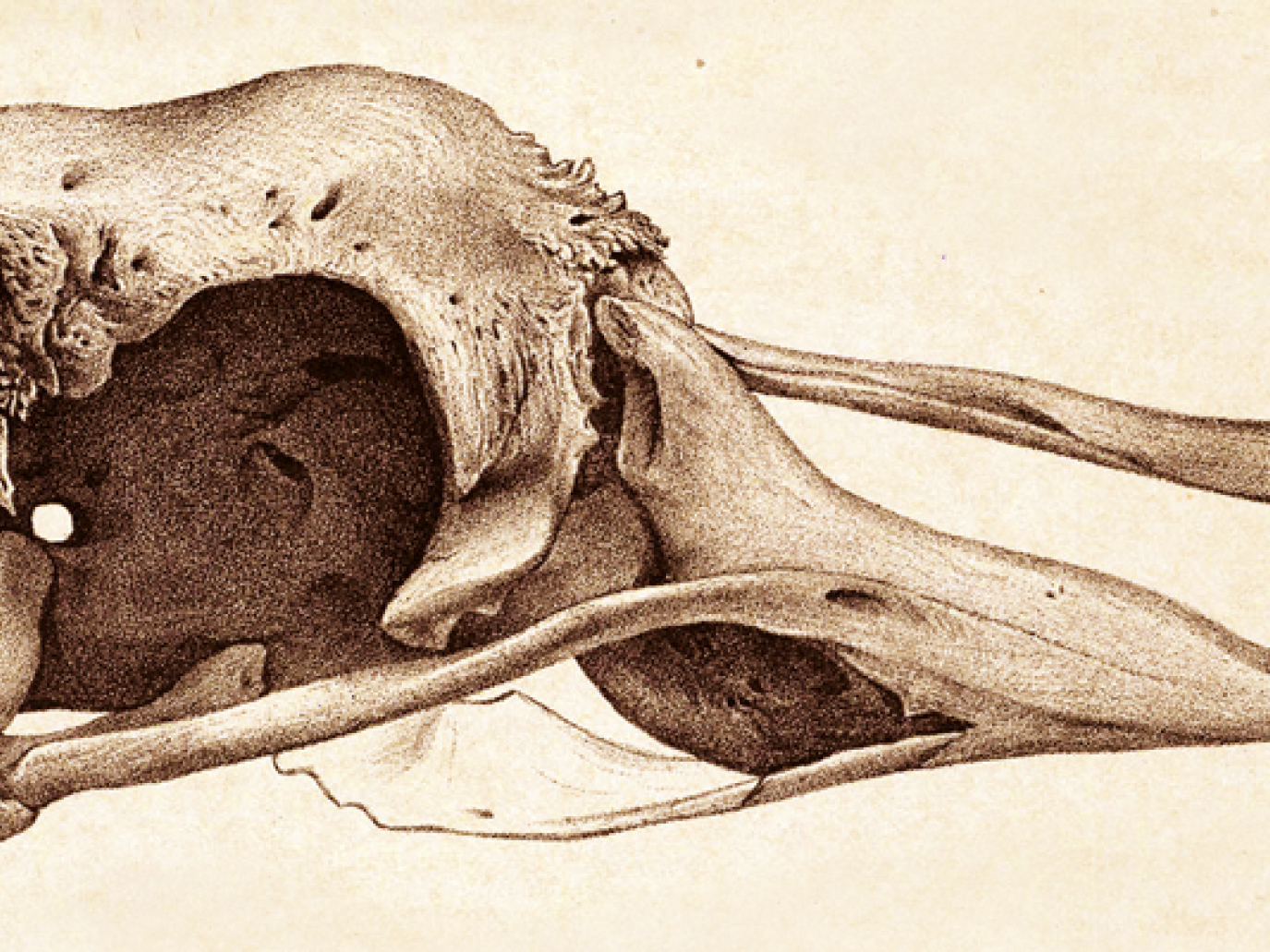In the past, a damaged object used to be mended. Clothes were patched, pots and working tools were repaired. End-of-life materials’ recycling was normal. The throwaway civilization, though, reduced such practices: an obsession for new models induced by advertisements and rapid technological evolution dictated an acceleration of objects’ replacement and an imposed reduction of their life span. Every year, Europe alone, eliminates 600 million tonnes of waste that could be recycled or reused.
This dominating trend is set against a new culture that, with difficulty, is successfully emerging and is based on a prolonged use of objects, on their sharing and end-of-life material recovery.
The package on the circular economy presented by the EU at the end of 2015, despite being less ambitious compared to the proposal put forward the previous year by Barroso Commission, shows more attention towards the recovery of materials and highlights the importance of object design, that must bear in mind their life span, reuse and the possibility of remanufacture them in order to give them a new life. The latter is an important opportunity within a transition towards the circular economy, although up until now it has not been met with the due attention.
Why Regenerating Used Products
Let’s consider an end-of-life car engine. A closer look at its preservation state enables us to say whether it can be revitalized. During this phase, Ford discards one engine out of three. Then the product is dismantled, each part is analysed, non-recoverable parts are replaced and in the end everything is calibrated. Then, the well-packaged engine is put back into the market with equal or better characteristics compared to the original model. In some cases, parts can be revisited so that they can offer a kind of performance that the engine could not achieve when it had been first produced 10-15 years previously.
Remanufacturing improved over time, extending to other departments, from industrial to office equipment, from the aerospace to electronic industry, with the US in the lead in the remanufacturing sector.
Although an expanding sector, the sales volume shows how it still represents a minority fraction. According to an investigation by the US International Trade Commission, the US regenerating activity generates only 2% of the income of the few industries involved. The US turnover amounted to $43 billion in 2011 (+15% compared to 2009), with 180,000 jobs.
As for Europe, the most recent data show a total turnover of €30 million, with 190,000 jobs. Germany is in the lead, followed by the United Kingdom, France and Italy, where 21,000 people are employed in the industries of heavy equipment, followed by the car, aircraft and consumer goods industries.
Noteworthy is that how, both in the USA and in Europe, the aerospace industry is in the lead.
Overall, the remanufacturing’s world turnover ranges between $100 and 200 billion. According to an estimate by the Franunhofer Institute, materials currently saved thanks to regeneration, could fill up 155,000 railway wagons for a total length of 1,700 km.
We are dealing with a production segment that, despite being limited, could grow considerably. In Europe its sales volume is estimated to grow threefold by 2030, reaching €100 billion. At the end of the next century, the total number of the employed in the sector could reach half a million, with a net increment compared to a conventional scenario of 175,000 people.
But in order to develop the great potential of this industry, hurdles limiting its expansions must be removed: in various parts of the world new policies and orientations are being developed in order to guarantee regeneration a wider application compared to the current situation.

Advantages
The benefits derived from remanufacturing include the environment, energy and raw materials’ saving and employment. But the main motivation for the companies involved has been the economy.
It has to be noted that this solution guarantees a higher added value compared to simple recycling of materials making up a product. The information content of the end product is thus not lost, as well as the design and the activity phases necessary to make the component intended for restoration.
Energy consumption compared to production from scratch is considerably lower, reaching 90%. There are important savings for raw materials as well: an advantage able to avoid volatility prices impacts, which can prove challenging for separate waste collection cycles. This is no small achievement for rare materials such as indium, tungsten, gallium, cobalt and chromium.
But ultimately, the economic advantage is king and determines its success. Operational costs are 35 to 90% lower compared to manufacturing from scratch. This is why it is possible to sell regenerated products with a 20-50% discount.
From the perspective of the businesses involved in this activity, there are many collateral advantages due to customer retention and expansion of the market in providing services.
As for Europe, the advantages can be particularly significant, considering that this practice generates a reduction in imports and new employment.
Where it Can Be Implemented
Products best suited for remanufacturing are those with a long-life expectancy, that are more expensive, easily dissembled and not subject to rapid technological evolution or aesthetic change. Locomotives, aircrafts, earthmoving machines, cars, health and office equipment. Even tyre remanufacturing, that in the case of lorries saves 60% of original rubber, can be included in this category. Extensive property renovation, in particular that involving an industrialization process, could be included in regeneration.
Those companies leasing their products could easily implement remanufacturing.
General Electric and Rolls Royce, for instance, do not sell their very expensive aircraft engines ($20-30 billion each) but they charge for their use according to the “Power by the Hour” formula.
Then there are the short shelf-life goods whose regeneration is not worthwhile.
For some products, the aspect of rapid technological innovation should be considered very closely. How to reconcile continuous improvements characterizing the information technology sectors, for example, whose brands instil anxiety for new products in many users, with the needs of the circular economy? With regard to mobile phones and laptops characterized precisely by rapid evolution and high replacement rates, there is a variety of actions that could be taken: regeneration, use of valuable single components and recovery of precious materials.
Those Involved in Remanufacturing
Who is involved in remanufacturing? Fist of all parent companies whose activities are aimed at profit expansion and loyalty programmes. This applies to the aerospace and heavy earthmoving machinery in particular.
Caterpillar, word-leading company for remanufacturing, started such activities since 1973 recovering machineries for mines and road, engine and locomotive building. The recovery mainly involves the better quality fraction (10%) of components: engines, pumps, compressors. Nine plants scattered around the world employ 3,600 workers specialized in regeneration of products that are proudly marketed under the brand “Good as new, stronger than ever”. Thanks to 90% energy saving compared to building new engines and reduced use of material, the revisited products are sold with a 40% discount.
Then there are individual companies, but directly linked to producing companies and the vast realm of independent businesses.

Reverse Engineering and 3D Printing
When regeneration is carried out by independent companies, the difficulty or impossibility to access design handbook can be a hurdle. This is where many times reverse engineering comes into play. Indeed, thanks to a detailed analysis of how a piece of equipment works it is possible to recreate algorithms and formulas enabling the production of a device comparable to the original one. Actually, thanks to the technological evolution that in the meantime has evolved, sometimes better performance is achieved, especially when it comes to electronic and electromechanical tools, subject to rapid obsolescence.
The US-based PSI specialized in this field, regenerating components of large aero generators such as control systems for blade inclination.
Digital printing is another important sector for regeneration. Having to rebuild single components that are no longer available, a less costly reproduction through additive techniques with a 3D printer is more cost effective. This is a choice that has already been applied to space flights and that will be used on ships to be able to cope on board with little supplies.
Obstacles to Remove
Regeneration can be regarded as a “sleeping giant”. The reasons why such potential has only just briefly exploited in practice are various, starting from a series of obstacles and barriers that will progressively have to be removed.
One of the most delicate aspects is about the collection of products to be processed. The reverse logistic represents a crucial stage because of the difficulties in predicting timescale, quantity and quality of used materials. Contrary to classic logistic, in the case of recovery of damaged goods, their transfer from a host of users towards regeneration plants must be organized. A second critical aspect is attention to design. In most cases, the aspects helping the disassembling and the potential remanufacturing of components are not considered. On the contrary, on some occasions, parent companies design their products in a way that their competitors can get involved in the regeneration. It has to be said, though, that incorporation is being given more and more attention during the design and choices are being made in order to facilitate later regeneration.
Lastly and more generally, its popularity clashes with barriers to free movement, given that several countries forbid the import of regenerated products.
All these difficulties explain how, despite being something that has occurred for decades now, remanufacturing still plays a marginal role.
To make a qualitative leap clear rules must be created in order for design to guarantee a long life expectancy to products, thus facilitating remanufacturing. Also, design should envisage a public purchase fast track for products intrinsically facilitating remanufacturing.
A “circular” Ecolabel should also be considered, rewarding products guaranteeing high performance in terms of recyclability, life expectancy and regeneration predisposition.
Some laws already facilitate rebuilding and others are underway in response to growing attention to the circular economy.
In the USA, at the end of 2015, a law has been approved envisaging that all federal agencies must favour the use of vehicles containing remanufactured parts if such choice entails economic savings.

Re-launching Regeneration
There are good reasons enabling us to imagine a quality leap for the entire regeneration sector.
In particular, two powerful drivers will shape economies in the next few decades – decarbonisation and circularity – will enhance the value of remanufacturing.
Moreover, the progressive movement of the economic model towards the supply of services rather that the simple sale of products, represents a strong stimulus towards regenerating activities. Its importance falls within a wider revisitation of the current production and consumption model.
Starting from the rethinking of design, which must be set up so that it can guarantee a long life expectancy of products, through the facilitation of the remanufacturing of their most valuable components.
More generally, from a cultural viewpoint, increasingly more attention is given to modification of the dominating paradigm.
The French norm in this regard is quite important (the 2015 energy transition law), sanctioning those products that obviously display a programmed obsolescence strategy.
This is a further step in the right direction facilitating the segment of regeneration from technological innovation. The digital revolution, through the adoption of reverse engineering and 3D printing, considerably extends its potential application.
Lastly, the role of the circular economy must be taken into account and to what extent regeneration in particular will be able to contribute in Europe’s current economic weakness. A serious supporting policy to remanufacturing falls within counter-cyclical measures able to increase employment and energy imports of raw materials and end products.
Top image: Skull of Rodrigues Solitaires, by C. L. Griesbach, 1879. Illustration from Memoirs on the Extinct Wingless Birds of New Zealand, Vol. II ©WikiCommons / University of Texas Libraries



